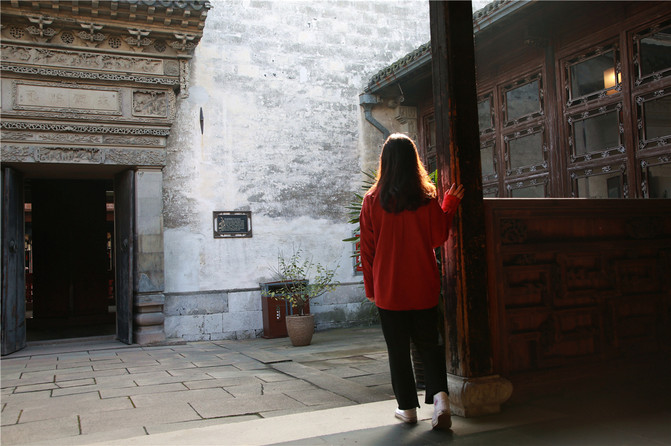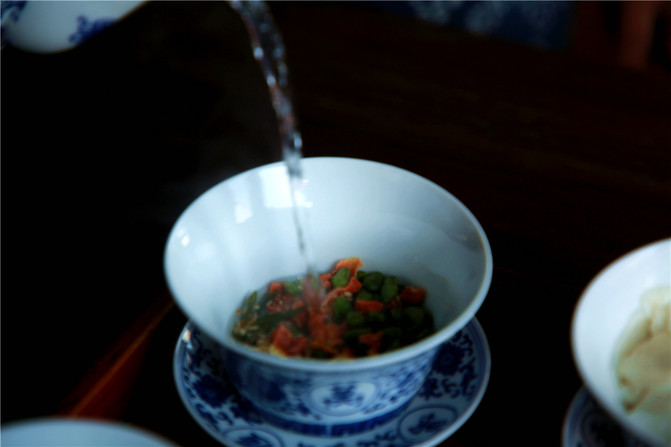Zhenze Ancient Town, a place worth stopping and tasting slowly
I went to Zhenze more than 20 years ago when I was engaged in design work at a silk factory. This is a small town famous for its silk. I know that the ancient town is very well preserved. Unfortunately, every time I come and go in a hurry, I only reach a nearby factory. However, I never had time to walk slowly in the town. Later, after leaving the silk industry, the opportunities to come to Wujiang gradually decreased, and the feeling of the ancient town became the longing of my old silk industry.

A few days ago, a friend invited me to play in Wujiang. I told you what I thought, so we embarked on the road to the ancient town together.

The car stopped in front of the archway with the plaque "Zhenze Ancient Town" written on it. We walked in, walked two to three hundred meters and turned into another alley. In the distance, an ancient tower stood in front of us. This tower is the Ciyun Temple Pagoda. It was built during the Chiwu Period of the Eastern Wu Dynasty and has a history of more than 1750 years. It is a brick body and wooden eaves pavilions. The tower is 38.44 meters high and has six sides and five floors. It consists of corridors, tower walls and tower center. The pagoda and temple stand by the river. It is really "surrounded by lakes with light, and the shadow of the tower hangs in the middle stream." The temple tower and the stone arch bridge next to it set off each other and entered my lens together.

Although the ancient town is already a 4A scenic spot, the residents of the town still live here. They still wash clothes by the river, stand leisurely by the river in twos and threes, chatting leisurely, or sit there alone in a daze. The city life is always with us.

We believed in the pedestrian street and saw a Jiangsu Province Agricultural Machinery Museum. Walking into the museum, we found that the past Jiangnan farming culture was displayed here one by one. Some came from ancient times, and some were memories that had just been just a short walk. The scenes of rural life in my childhood seem to be vivid in my mind. I can't help but pity today's children. Although they were born in a land of fish and rice and grew up in Jiangnan, a land of fish and rice, they don't know what a land of fish and rice is. They have never even seen real water buffaloes plowing, but they can only search in museums.
The old items in the museum, made of sericulture, silk and weaving, reproduce the silk culture of Zhenze's ancestors. They all say,"Zhenze's silk, Shengze's silk is famous. Although there are not many items here, it can still bring back my old memories. Zhenze is worthy of being a silk town. There are several silk quilt shops and satin cheongsam shops in the town that allow you to feel the charm of silk.
Taihu Lake farm cuisine is very local. Zhenze is adjacent to Taihu Lake. It is said that Zhenze is another name for Taihu Lake. The food here shows the cultural atmosphere of Taihu Lake everywhere. The Taihu China Farmhouse Cuisine Culture Exhibition Hall is a collection of dishes that make your mouth watering. Although plates and bowls are all models, they can still arouse people's appetite. There are also farmhouse tables, unique ingredients in Jiangnan, top ten ingredients such as Taihu Lake Sanbai, lotus root and seaweed, eight famous dishes, etc. The exhibition hall is divided into six exhibition areas for display, advocating "green, healthy and nutritious" diet concept, inheriting and innovating Taihu farm cuisine.
As early as 2008, Zhenze was awarded the title of "China's Taihu Farm Food Hometown". When he came to Zhenze, in addition to watching dishes in the museum, the more important thing was to find a B & B to stay in Xiaolai. Several people sat by the river, brew a cup of fragrant tea, order a few unique Taihu Lake dishes, and taste them in person. In this cool late autumn, the river is bathed in the warm sunshine. A few of them chat casually about life outside of work, and occasionally play two games of chess and cards. Half a day of time inadvertently passes by.

Shijiantang in the town is known as the "big house gate" in Jiangnan, and its exquisite ancient buildings have become the symbol of the ancient town. Shijiantang was built in the sixth year of Jiaqing (1801) of the Qing Dynasty. It was rebuilt by Xu Rufu in the third year of Tongzhi, and later repaired and expanded. It integrates river ports, hotels, shops, streets, halls, inner houses, gardens and lower houses. Baota Street runs through the hall. It can be said that a house is built in the street, and the house contains the street. This house is facing the river on three sides. You can get on a sedan chair in front and get off the boat at the back door, making water and land transportation convenient.

Shijiantang covers an area of 2746 square meters, has a building area of 3534 square meters, and has a width of five rooms. It has a six-entry hall style high-wall deep house building. It cleverly constructs the space on three axes to create a solemn and simple traditional Chinese style, with triple functions for officials, Confucianism and businessmen. The courtyard is only more than half an acre but is full of pavilions and pavilions. In 1995, Shijiantang was listed as a cultural relic protection unit in Jiangsu Province, and in 2006, it was listed as a national key cultural relic protection unit.

The word "Shi Jian" originated from "Historical Records: Xiao Xiangguo Aristocratic Family":"Later generations will be virtuous and we will be frugal; if you are not virtuous, you will not be taken away by powerful families." The connotation of this name not only reflects the owner's diligence and prudent attitude in managing the family, but also points out the style and taste of the entire Shijian Hall. The Xu family has distinctive characteristics of Confucian merchants, and this Confucian merchant temperament is also reflected in the construction of halls and gardens. Since its reconstruction during the Tongzhi period, Shijiantang has been used by the Xu family for business and residence. It has taught future generations with its advocacy of frugality, imitating Zhang Jian's noble character and integrity in the Eastern Han Dynasty, and the "frugality" culture has become a heirloom of the Xu family.

At the other end of Baota Street at the same time as Shijiantang is the above-mentioned Ciyundan Temple. Most of the ancient buildings on the street are two-story Ming and Qing styles, making Zhenze an ancient town that integrates ancient towers, ancient temples, ancient bridges, ancient alleys, and ancient houses.

The snacks in the ancient town are also quite famous. The most famous ones are the cakes made by Renchangshun, which was built in the Qing Dynasty, and the four bowls of tea from the adjacent Siwan Tea House. Renchangshun Pastry Shop is a time-honored brand that was founded for more than 100 years in the third year of Tongzhi in the Qing Dynasty (1864). At first, it only sold various rice cakes and smoked bean tea and other traditional refreshments that shook the local area, and now it is sold. Later, on this basis, relying on his mastery of Su style, Hui Bang, and Beijing Bang pastry making skills, he founded Zhenze Renchang Food Factory, and gradually implemented mass production of various refreshments. The stores here have shops in front and back, and are now sold at the ready. They mainly produce Chinese and Western pastries and local specialties, such as ear cakes, dried vegetable cakes, osmanthus cakes, black rice cakes, orange cakes, sesame cakes, loquat stalks, mulberry cakes, smoked bean tea, etc. Ren Changshun inherits century-old traditional craftsmanship, insists on hand-made production, and pays close attention to the ratio of raw materials. The Dingsheng Cake he makes has appeared on CCTV's "Taste" column, CCTV's "China on the Bite of China 3", China's scenery and geography. As well as food programs on multiple TV stations.

We walked into Siwan Tea House, and the landlady greeted us with a smile and guided us to the seats by the river. This is a small tea shop near the river. The store is not big and antique. We sat at the table in the corridor and looked at the sparkling water next to us. The kind landlady brought us a small plate of melon seeds. As we chatted casually, she was busy making tea, and soon she brought a tray with four tea bowls. One bowl of boiled eggs has been cooked, and the other three bowls are brewed with boiled water on site. Rice rice tea, smoked green bean tea, and green tea. These are delicacies passed down by the locals for many years. It is said that rice rice tea served Emperor Yongle. The aroma of the freshly brewed tea came to our nostrils with the heat. The landlady then introduced us to the origin of the four bowls and related folk customs. As we listened, we were still drinking tea and chatting, and unknowingly the sun set in the west.


Because it is not a weekend, not many people come to the ancient town, but it is quiet. Such a street surface is not suitable for the bustling scene. It is more appropriate to taste it slowly, just like tasting a thick bowl of tea. The slower it takes, the more fragrant it will be.
Previous Article:Depart from Shanghai, 2015 Changshu 2-day self-driving tour (Xingfu Temple, Yushan)
